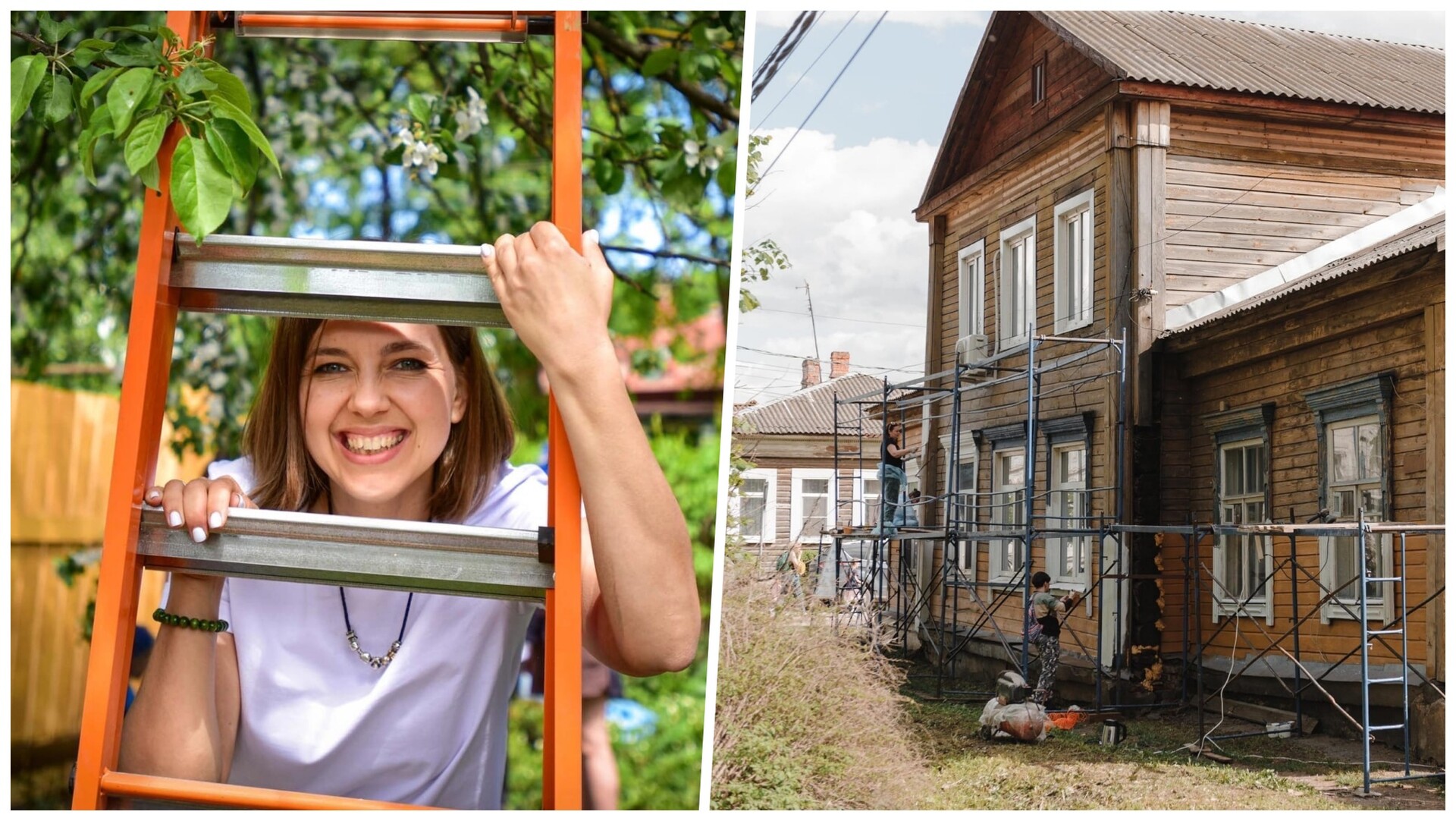
Restoration of the log house in Pereslavl-Zalessky, Yaroslavl Region.
Tom Sawyer FestOld wooden houses built of centuries-old timber and decorated with carved window surrounds and turrets have survived to this day in many Russian towns and cities. They are particularly noteworthy in the former merchant towns of Volga Region and Siberia, although many are in desperate need of proper maintenance and restoration. Residents of Samara decided to set an example: It was there in 2015 that a community of people formed that restored several facades in the city center at their own expense. They called their initiative ‘The Tom Sawyer Fest’ - do you remember how Mark Twain’s character involved boys from the neighborhood in whitewashing a fence in such a way that they treated it not as work, but as fun?
“Our festival is not so much about houses as about people,” says Tatyana Surkova, federal coordinator for the community. “It is important for us to show by our example that everyone has a right to their city and that there is a format whereby people can do something themselves.”
It all started in 2015. At the time, Tatyana was working on a local magazine together with historian and editor-in-chief Andrei Kochetkov. They wrote articles, gave guided tours and “revealed Samara’s merits to the people of Samara”.
“We had a depressing situation: There were a whole number of wooden buildings and all of them were deteriorating,” says Tatyana. “And then Andrei came back from the ‘Living Cities Forum’ in Izhevsk with the idea that we could go and paint them ourselves.”
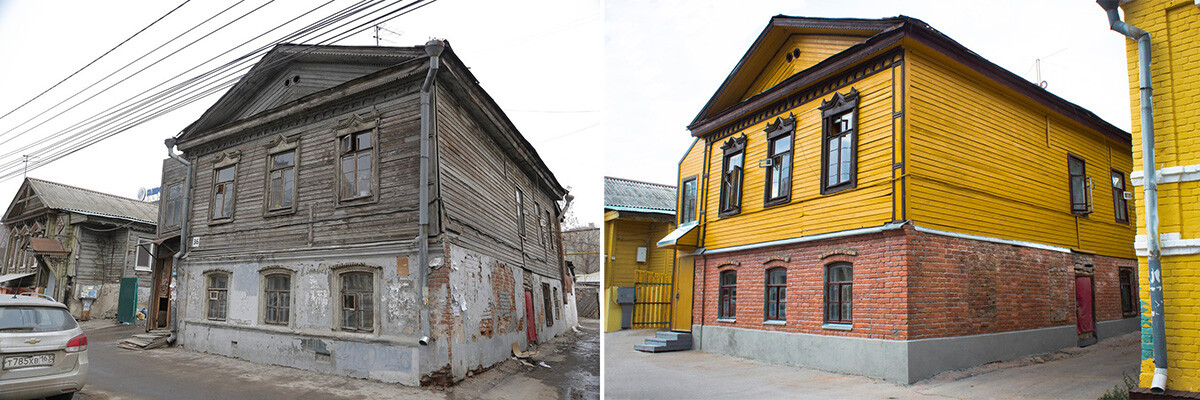
The first house restored in 2015 on Lva Tolstogo, 36.
Tom Sawyer FestThe first project they chose were three houses on Lva Tolstogo (Leo Tolstoy) Street in the historic center. They were not listed as cultural heritage sites, so no special license was required to renovate their facades.
They wrote about their initiative in the magazine, inviting anyone interested to take part. “On the very first day, we received applications from 50 volunteers offering to help,” recalls Tatyana. “The result amazed us. Other media outlets wrote about us and people from other towns and cities got in touch saying they wanted to do the same.” Even Finnish actor Ville Haapasalo, who was shooting documentaries about travels in Russia at the time, took part in the festival.
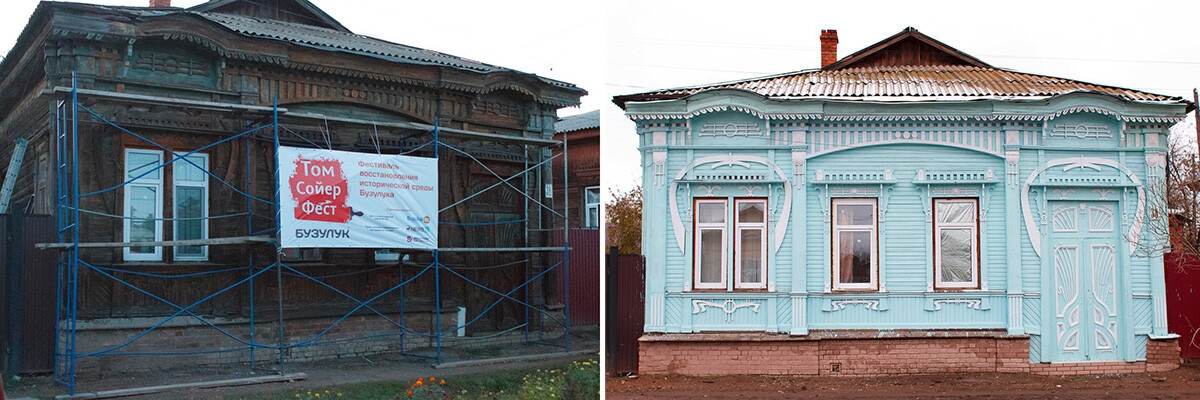
Before and after: Tom Sawyer Fest in Buzuluk.
Tom Sawyer FestOf course, you can’t just turn up and repaint a facade. First, we went door to door to get the residents’ written consent, we showed the project to the city administration (which means we had to enlist the services of professional architects and restorers) and looked for partners to buy building materials. There was a huge amount of work.
By the following year, Kazan and Buzuluk (Orenburg Region) had joined Samara, and another year later the first ‘Tom Sawyer Fest School’ was organized to train future regional coordinators.
“For a couple of years, I observed the festival taking place in Kazan, and in the end went to train as a coordinator,” says Lyubov Yegorycheva from the town of Naberezhnye Chelny in Tatarstan. “Our city is industrial, but 30 km away is the bijou merchant town of Yelabuga, where we often go on our days off and which we find an inspiring place.”
And, in 2021, Lyubov found like-minded enthusiasts in Naberezhnye Chelny, who got very excited about the idea of restoring the facades of buildings in Yelabuga, a town with a history spanning a thousand years. “We started on a single-story house on Spasskaya Street in the central part of town. It is not in itself an important building in terms of cultural heritage, but it stands next to important buildings.”
The team managed not just to reach an agreement with the current owner of the building, but also to contact descendants of the merchants who owned it more than 100 years ago. They even unearthed old photographs taken before the 1917 Revolution.
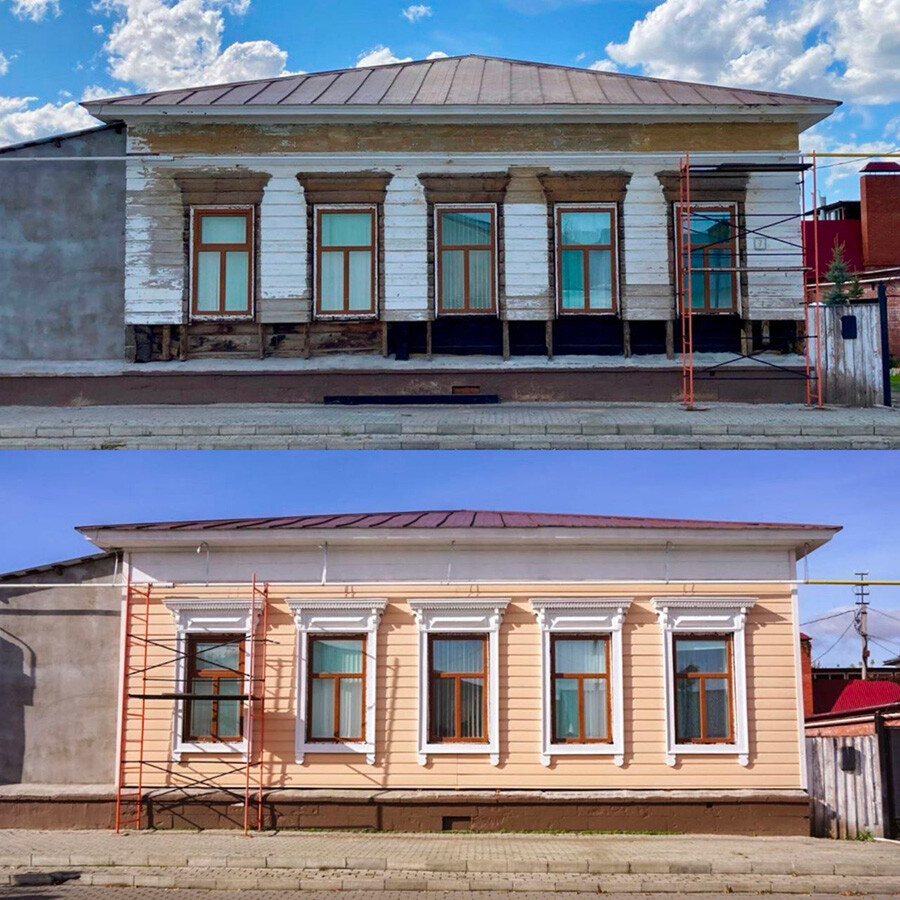
Before and after: the house in Yelabuga.
Tom Sawyer Fest Yelabuga“It took us two seasons to do up the building since we had to travel from Naberezhnye Chelny and could only realistically work on it on our days off,” Lyubov says. “We got help from the administration and the Yelabuga museum, but, unfortunately, the local people were merely observers then.” Something like 70 people took part in the work on this single building during the two seasons. And now Lyubov and her team are considering what building to take under their protection in 2023: “We want to reach out to the townspeople so that it becomes something important for them too.”

Here's the house in Barnaul, Siberia.
Tom Sawyer FestThis kind of “festival of the restoration of the historical environment” has, so far, taken place in 75 Russian towns and cities at least once (and even in the town of Karakol in Kyrgyzstan) and such events take place in about 40 towns regularly. The festival now has partners - mainly construction companies which supply tools and materials without charge. Town administrations frequently help with the removal of rubbish, provide scaffolding or pay small allowances to the volunteers.
During this time, 169 restoration projects have been carried out and another 17 are in progress. In some towns, work is carried out on two or three buildings in the course of a summer season (which, in Russia, lasts just three or four months or even less), while, in other towns, only one building is possible. Soviet-era public transport stops, mosaics, gates and fences are restored in addition to buildings.
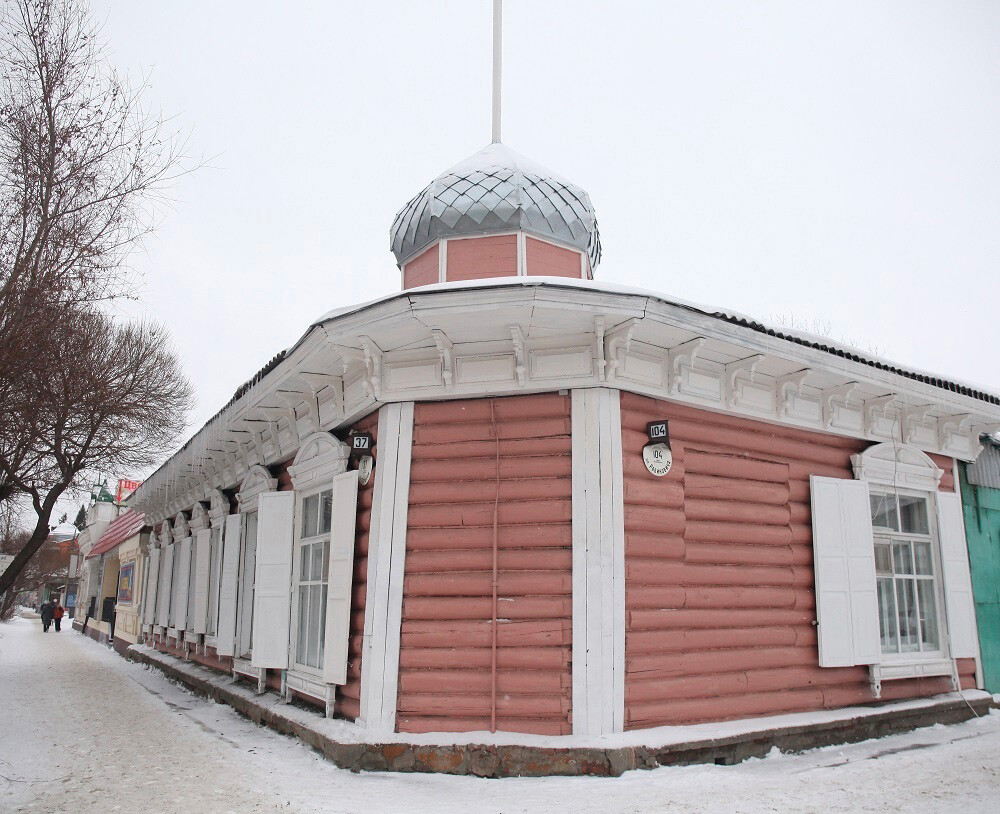
The restored house in Omsk.
Tom Sawyer Fest OmskSvyatoslav Konovalov, a professional historian and member of the Omsk (Siberia) branch of the Society for the Protection of Cultural Heritage, says that the restoration of wooden buildings in his city is merely a logical continuation of his own work. He and other like-minded enthusiasts did up their first building in 2018. Now the fourth such building has already been completed. “A building needs to attract a lot of social attention in order to be interesting to large numbers of people. There should be some kind of romantic ‘selling point’,” Svyatoslav says. “During this season it was a lost tower that we rebuilt. For the project, we enlisted the services of an engineer who drew up the plans for us to make sure the tower did not fall down.”
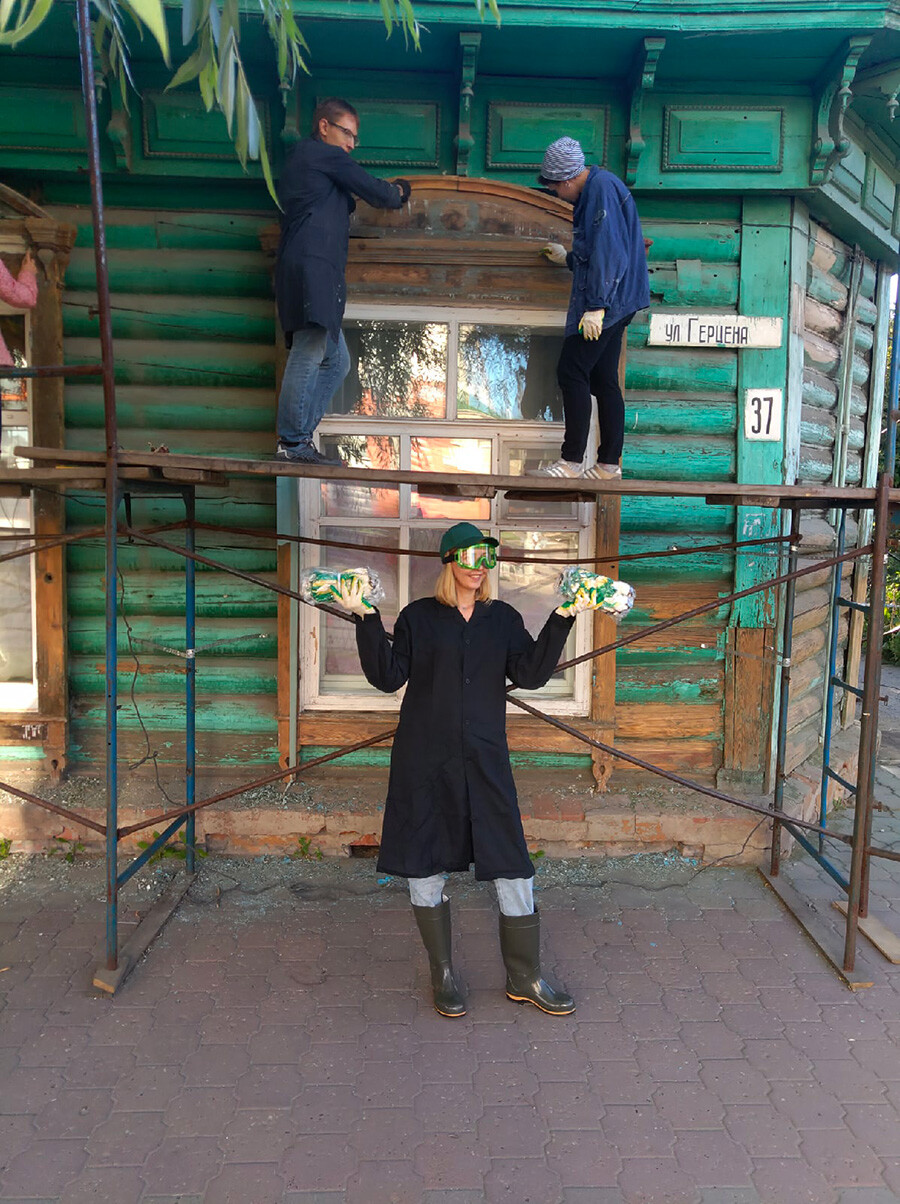
The volunteers in Omsk.
Tom Sawyer Fest OmskDepending on the weather, from four to 15 volunteers come to the site of a restoration project each day. No particular skills are required - apart from a willingness to join in, says Svyatoslav. “I am involved in restoration myself and can explain to people the proper way to do particular jobs.”
He says the society does not set itself the goal of repairing all the old buildings. “The main thing is to set an example and to inspire a sense of solidarity in the owners of historic buildings and implant the idea that they are not in possession of decrepit old structures, but of a piece of cultural heritage with enormous potential.”
Dear readers,
Our website and social media accounts are under threat of being restricted or banned, due to the current circumstances. So, to keep up with our latest content, simply do the following:
If using any of Russia Beyond's content, partly or in full, always provide an active hyperlink to the original material.
Subscribe
to our newsletter!
Get the week's best stories straight to your inbox